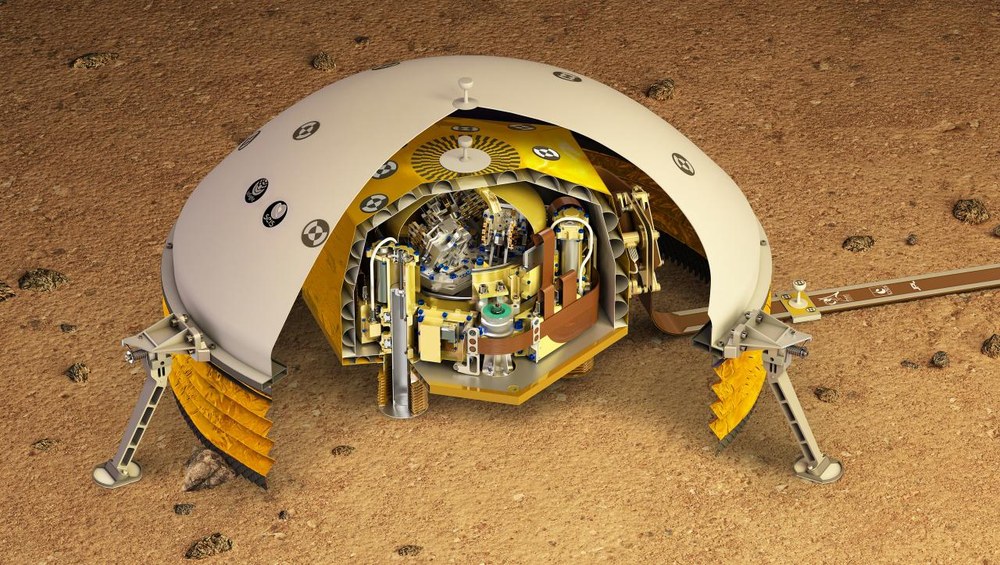Brochure: Mission InSight (2018)
View into the Interior of Mars

The Seismic Experiment for Interior Structure (SEIS) seismometer consists of a total of six seismic sensors that record the vibrations of the Martian soil in three directions in space and at two different frequency ranges (Very Broad Band [VBB], covering 0.01–10 Hertz and Short Period [SP] covering 0.1–50 Hertz). The overlap of the two frequency ranges allows them to be mathematically combined into a single extremely broadband seismometer.
The three sensors that are sensitive to low frequencies are housed in an evacuated container, as the air resistance of even the thin Martian atmosphere would dampen the movement of the sensors too much. This container rests on a levelling system (LVL) with three telescopic legs to ensure that the casing is precisely horizontally aligned, as the VBB sensors would not work otherwise. The three sensors for the higher frequency range are mounted on the outside of the LVL. In order to protect the seismometer against wind and strong temperature fluctuations, a protective dome (Wind and Thermal Shield, WTS) will be placed over it.
In the first two weeks after arrival, the lander’s immediate surroundings will be precisely mapped and surveyed to find the ideal location for the two instruments – SEIS and HP3. The robotic arm will then lift out and install the seismometer, with the location checked and recorded once more before the WTS is placed on top of it. Work on the assembly of the seismometer should be complete by 5 January 2019.
Institutions from several countries have provided the SEIS components. The low-frequency VBB sensors are from the Institute du Physique du Globe in France, the high-frequency SP sensors are from Imperial College in the United Kingdom, and the control electronics were made at the Swiss Federal Institute of Technology in Zurich (Eidgenössische Technische Hochschule; ETH). The vacuum container, the WTS and the connecting cable, with almost 300 wires for electrical supply and data transmission to the lander, come from the NASA Jet Propulsion Laboratory (JPL) in the USA. Finally, the levelling system was developed and built by the Max Planck Institute for Solar System Research in Göttingen, Germany.
An international team comprising members from these and other countries will evaluate the scientific data. DLR has participated in this project through its seismic models, which provide a statistical evaluation of the frequency and strength of marsquakes.
